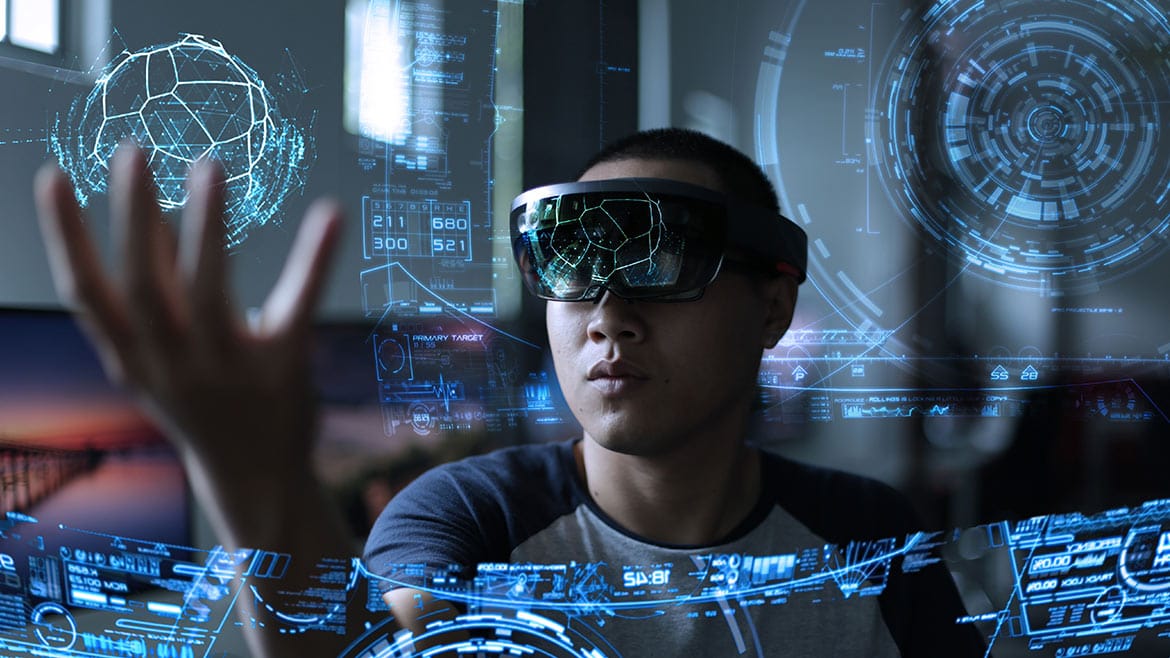Table of Contents
The world of shopping is undergoing a metamorphosis. Gone are the days of static product displays and impersonal interactions. Augmented reality (AR) is rapidly transforming the retail landscape, blurring the lines between the physical and digital worlds to create a captivating and interactive customer experience. This innovative technology has the power to revolutionize how we interact with products, fostering deeper engagement and brand loyalty.
Industries Using AR and VR
Automotive:
AR allows customers to view and customize vehicles in real-time.
Retail:
- AR apps enable customers to place virtual furniture in their homes to preview before purchase.
Beauty:
- AR technology lets customers try on makeup virtually.
Healthcare:
- AR aids surgeons with real-time guidance and information during operations.
Tourism:
- Augmented Reality (AR) is increasingly being utilized in the tourism industry to enhance visitor experiences through interactive and immersive guides for landmarks and cities.
E-Commerce:
- AR enhances virtual shopping experiences, allowing customers to visualize products in their homes.
Education:
AR is used as an interactive tool to enhance traditional textbooks with animations, 3D models, and videos.
AR's Impact on Product Interaction
AR’s core strength lies in its ability to overlay digital elements onto the physical world in real-time. This creates a dynamic environment where customers can transcend the limitations of traditional product displays. Here’s how AR is redefining product interaction:
- Virtual Try-Before-You-Buy: Imagine trying on clothes without stepping into a fitting room, or visualizing furniture in your living space before making a purchase. AR apps allow customers to virtually place a 3D model of a garment on their body or see how a piece of furniture would look within their home’s dimensions. This eliminates the guesswork and fosters informed decision-making.
- Interactive Product Exploration: Static product descriptions are a thing of the past. AR can breathe life into product information by displaying interactive 3D models with detailed hotspots. Customers can tap on different sections to reveal technical specifications, care instructions, or even instructional videos. This empowers them to delve deeper into the product’s features and functionalities.
- Gamified Product Discovery: Shopping can be a fun and interactive experience with AR. Gamification elements like treasure hunts or interactive quizzes can be layered onto physical stores, guiding customers on a product discovery journey. This not only entertains but also incentivizes exploration, potentially leading to increased product consideration.
Engaging with Customers on a Deeper Level
AR’s impact extends beyond product visualization. It fosters deeper customer engagement by creating a more personalized and interactive shopping experience:
- Storytelling and Brand Immersion: AR allows brands to weave engaging narratives around their products. Imagine using your smartphone to scan a product and learn a compelling story about its origin, manufacturing process, or ethical sourcing practices. This emotional connection fosters brand loyalty and strengthens customer relationships.
- Personalized Product Recommendations: AR apps can leverage customer data and browsing history to curate personalized product recommendations. Imagine a virtual shopping assistant that pops up on your phone screen, showcasing complementary items that match your style preferences as you browse through a physical store. This level of personalization enhances the shopping experience and increases the likelihood of a purchase.
- Seamless Customer Support: AR can revolutionize customer support by providing instant access to interactive troubleshooting guides and FAQs. By scanning a product with their smartphone, customers can access step-by-step assembly instructions and maintenance tips or even connect with a virtual customer service representative for real-time assistance.
Challenges and Considerations for AR Integration
While AR offers immense potential, there are challenges that need to be addressed for widespread adoption:
- Technical Limitations: It is still evolving, and hardware and software limitations can hinder user experience. Battery life on smartphones and the processing power required for smooth AR experiences need further development.
- Privacy Concerns: Overlaying digital elements onto the real world raises privacy concerns. Businesses need to ensure transparency in data collection practices and prioritize user privacy to build trust with customers.
- Content Creation Costs: Developing high-quality 3D models and interactive AR experiences can be expensive. Businesses need to find a balance between the cost of AR development and the return on investment.
The Future of AR: A Connected Shopping Experience
Despite these challenges, the future of AR in customer engagement is bright. As technology matures and costs decrease, AR is poised to become an integral part of the shopping experience. We can expect to see:
- Integration with the Internet of Things (IoT): What if AR can interact with smart devices within a store? Customers could scan a product and receive real-time inventory updates, personalized discounts, or even trigger in-store demonstrations.
- The Rise of AR Marketplaces: Standalone AR apps could evolve into full-fledged AR marketplaces, allowing customers to browse and purchase products seamlessly within the augmented reality environment.
- Omnichannel AR Experiences: AR will bridge the gap between online and offline shopping. Customers might use AR apps to research products online and then use the same app in-store for further exploration and purchase.
Conclusion
With the ongoing development of AR technology, we expect to see a wave of novel applications that will create an extraordinarily immersive and engaging shopping experience for consumers. By creating interactive product experiences, fostering emotional connections with brands, and offering personalized customer support, AR has the power to redefine how we shop. As AR technology continues to evolve, we can look forward to a variety of innovative applications that will offer consumers a highly immersive and engaging shopping experience.


